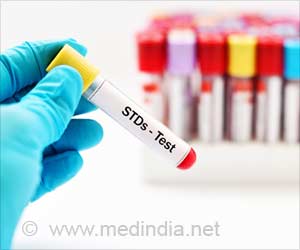Scientists have made the long-sought discovery of how sperm latches onto an egg in the very first spark of reproduction.

In 2005, Japanese researchers reported they had found a molecule jutting from the membrane of mammalian sperm that docks onto the surface of the egg.
They called it Izumo, after a Japanese marriage shrine.
That unleashed the search for the receptor on the surface of the egg, which has been elusive, until now.
Reporting in the journal Nature, researchers at Britain's Wellcome Trust Sanger Institute said the mechanism is contained in a protein on the egg's membrane, under a thin external coat called the zona pellucida.
The protein has been dubbed Juno, after the Roman goddess of fertility and marriage.
"We have solved a long-standing mystery in biology by identifying the molecules displayed on all sperm and egg," said lead researcher Gavin Wright.
"Without this essential interaction, fertilisation just cannot happen. We may be able to use this discovery to improve fertility treatments and develop new contraceptives."
If defects in Juno prove to be a cause of infertility, a simple genetic test could advise couples seeking to have a baby, the researchers hope.
Instead of going through long, costly and stressful attempts at assisted fertility treatment in which sperm try to fuse with an egg in a lab dish, they could then try a single-sperm injection directly into the egg.
The team made the breakthrough using clues provided by Izumo itself.
They created an artificial version of Izumo and used it to scan for a counterpart molecule on the membrane of a mouse egg, so identifying Juno.
- Fertility key -
The scientists then genetically engineered mice whose eggs had no Juno. The mice were infertile, and in lab dishes, Juno-deficient eggs did not fuse with normal sperm.
Further studies found that Juno was also present on the eggs of humans, possums and pigs.
"The Izumo-Juno pairing is the first known essential interaction for sperm-egg recognition in any organism," said Wright's colleague, Enrica Bianchi.
About 30 to 40 minutes after Juno and Izumo meet up, the surface of the egg undergoes a remarkable biochemical change.
Juno is ejected from the membrane, thus preventing additional sperm from binding and creating a zygote with too many chromosomes, which would lead to dangerous defects in the offspring.
In a commentary also carried by Nature, biologist Paul Wassarman of the Icahn School of Medicine at Mount Sinai, New York, said it was unclear whether the Izumo-Juno interaction was the only factor in the fusion of egg and sperm.
Allan Pacey, a fertility researcher at Britain's University of Sheffield, who was not involved in the research, said he suspected a dysfunctioning Juno, or lack of it, was unlikely to be a major cause of infertility in couples.
"Perhaps the most likely application is whether scientists could devise drugs or vaccines that could block the way this protein works or how the sperm protein Izumo interacts with it," he said in remarks carried by the Science Media Centre.
"This could lead to a new and novel non-hormonal contraceptive for both humans and other species of mammals."
Source-AFP









